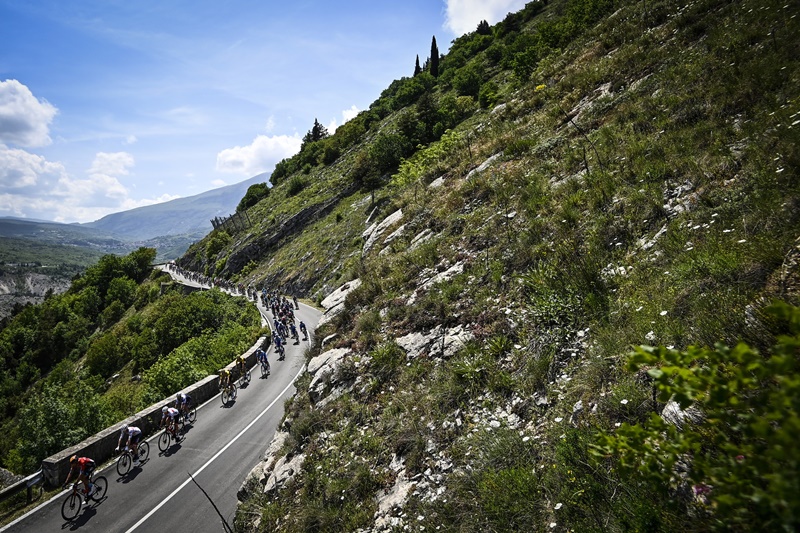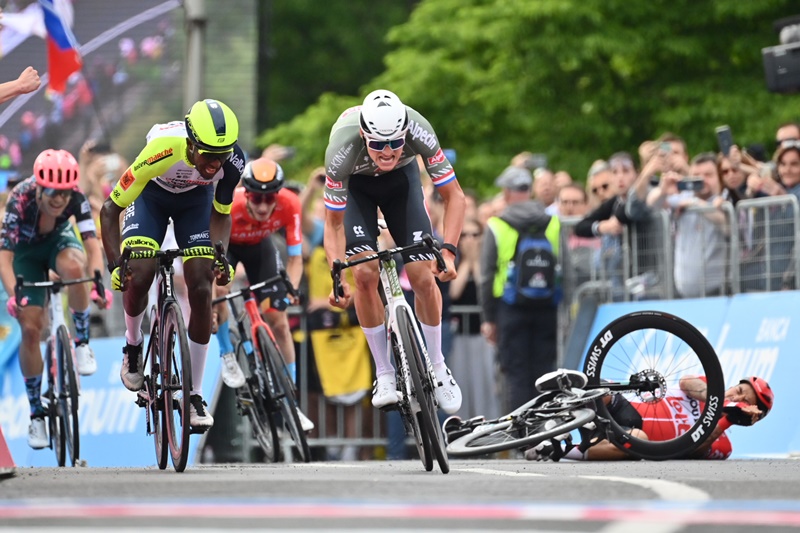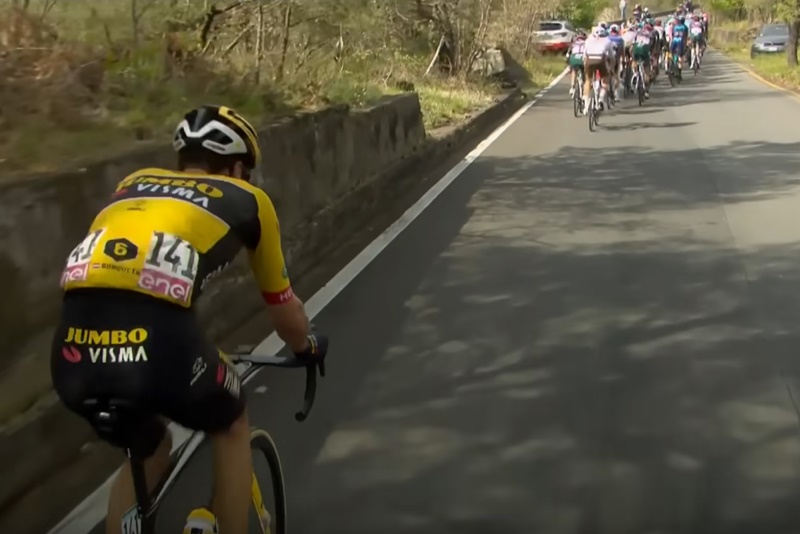
Maybe it’s just an illusion derived from social media, but sometimes I feel like I’m adrift in a world of certainty. Everyone arguing their case with conviction. Everyone eternally right about everything.
I have no clue who’s going to win the Giro d’Italia.
Hungarian triptych

This year’s Giro kicked off with three very different stages in Hungary and three high profile winners.
Mathieu van der Poel took the pink jersey after the long drag at the end of Stage 1. Kind of a sprint, but not really a sprint, it demanded just the kind of freakish prolonged power in which the Dutchman specialises. With everyone already flat out, Van der Poel somehow surged past everyone from about eight riders back.
Then it was the time trial, a saucy little 9.2km number. Simon Yates is not a time trialist, but he won one in Paris-Nice in 2019 and he won this one too.
“I just tried to go as fast as possible,” he revealed. (Just wait until everyone else catches on to that ingenious tactic.)
Stage 3 was then a classic sprint finish and being as those 1,159 winless days from February 2018 to April 2021 have now been reclassified as “a blip,” of course Mark Cavendish won. That’s where we’re back to. At the age of 36, with his career having already pretty much completely petered out, we’re excavating and dusting down the term “of course Mark Cavendish won”.
The first mountain clear-out

No Grand Tour leaderboard truly makes sense until they’ve been up a mountain. This can make following the race in the early stages a tad confusing. Fortunately the Giro decamped to Sicily for Stage 4 and a 23km climb up Mount Etna.
It’s not a steep climb when taken as a whole, but by hell it’s a long one – plenty long enough to weed out a few riders who might otherwise have masqueraded as overall contenders into the second week.
First to go was Miguel Angel Lopez, who climbed off his bike before they’d even hit the foot of the climb. While the Colombian’s never won a Grand Tour, he generally shapes up as podium fodder. This latest abandonment – due to a hip injury – does however mean that he has failed to finish four of his last five three-week races.
Lopez’s team-mate, Vincenzo Nibali was dropped further up the slopes, which must have been pretty disappointing for the Sicilian in what everyone seemed to assume – and which he has now confirmed – will be his final Giro.
Tom Dumoulin surrendered minutes and overall hopes too. The 2017 Giro winner hasn’t raced a Grand Tour in a couple of years after taking a bit of a sabbatical from pro cycling. He’s back in the saddle now, but not yet in contention.
The most significant development on this stage in terms of where things stand right now was that young Spanish rider Juan Pedro Lopez got in the break and finished second. He is a strong and up-and-coming rider – 13th in last year’s Vuelta a Espana – but you can be pretty certain that his current hold on the overall race lead won’t last to the finish. We’re very much in ‘every day in pink’s a bonus’ territory.
… and move

The top 10 barely twitched from then until the end of the week. There were a couple of wins for Arnaud Demare (who always seems like a nice chap) and Thomas de Gendt’s victory from the break on Stage 8 deserves a mention – because Thomas de Gendt is great and also because it was a tense finish with Mathieu van der Poel and others bearing down on the front group – but it wasn’t until Stage 9’s summit finish that any meaningful action took place.
Blockhaus sounds more like a musical genre than a mountain, but it’s actually the latter – 13.6km at 8.4%. A tough finish. “Selective” is in fact the word you’re obliged to use a cycling journalist.
Simon Yates had injured his knee on Stage 4 and he lost 11 minutes and was deselected. Another Briton, Hugh Carthy, lost 3m48s.
It was a real back door kind of a climb with riders steadily drifting off the back of the front group almost constantly all the way up. By the end, there were just five riders left – although it’s worth emphasising that the five had been three up until a bit of pissing about as the finish line neared.
The stage was won by Australian Jai Hindley, runner-up in that weird 2020 Giro when hardly anyone had been training outdoors. He wasn’t one of the three who’d been leading up the climb though. That trio had comprised 2019 winner Richard Carapaz, Romain Bardet and Mikel Landa, who generally likes to finish fourth in Grand Tours. They look the standout riders at the minute, even if Hindley and Joao Almeida did ultimately grind their way back to them.
Domenico Pozzovivo looked pretty good too, finishing just three seconds down. A seventh top 10 finish for the one-dimensional 39-year-old would be nice.

What’s next?
The Giro tends to save its obviously big stages for weekends. After a few long stages midweek, we get what almost amounts to a mountain circuit race on Saturday – two laps that take in the Superga climb and the Colle della Maddalena. Neither slope’s a monster, but they’re steep in places – the latter in particular – and there’s a lot of climbing in the stage as a whole.
This is followed by a more obviously classic mountain stage with the riders tackling the Pila Les Fleurs climb (12.3km at 6.9%) and then Verrogne (13.8km at 7.1%) before a long summit finish to Cogne (22.4km at 4.3%).
My lofty aim at the minute is to recap this middle week separately but it may well get rolled into a larger second half of the race recap. Either way, you can sign up to get it by email here.
Leave a Reply